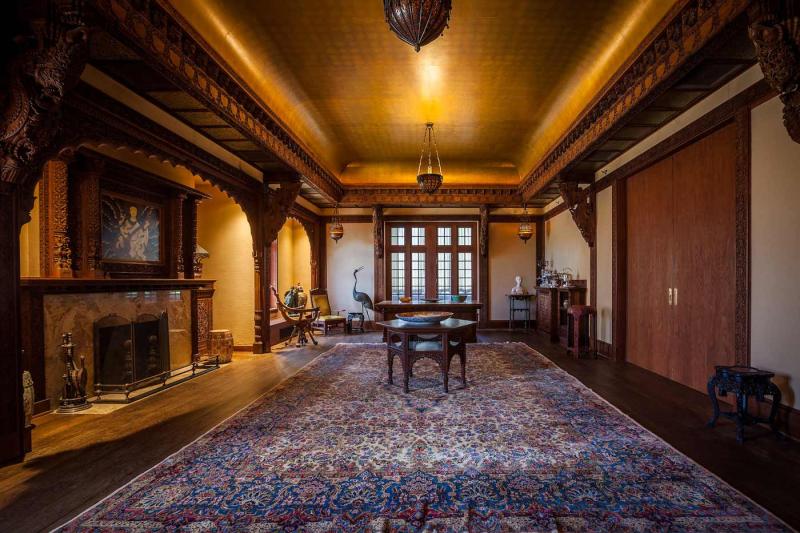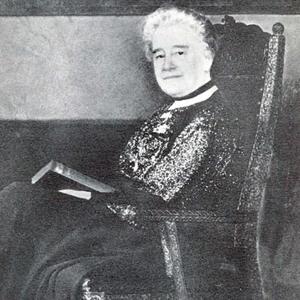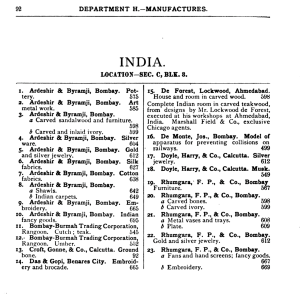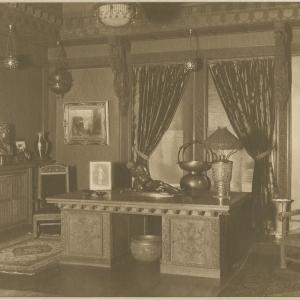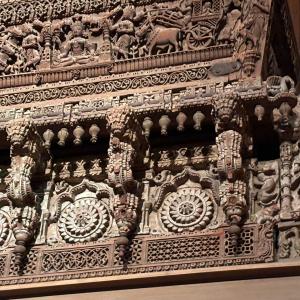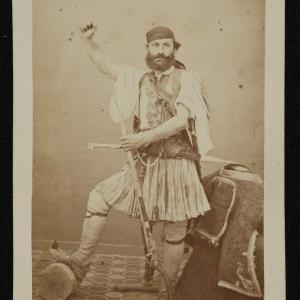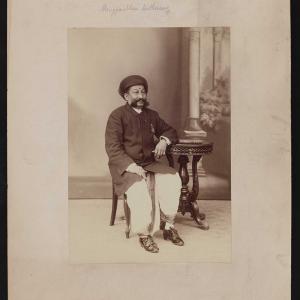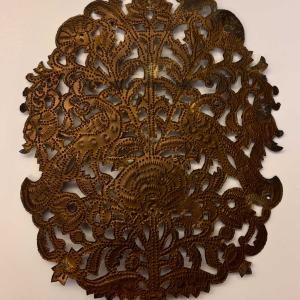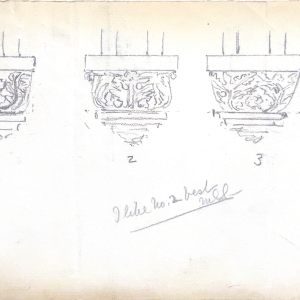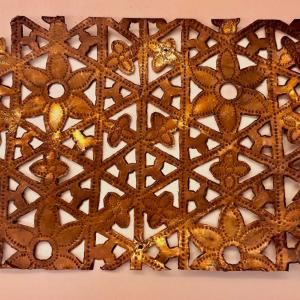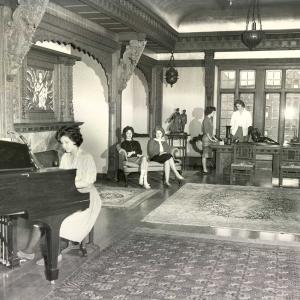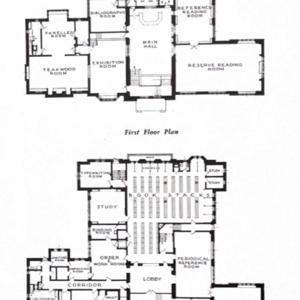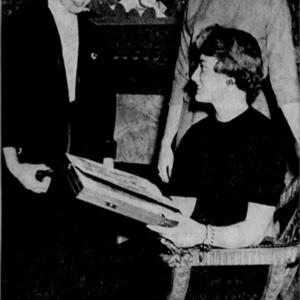The Teakwood Room’s Journey to Appleton
Despite its unassuming location, the room has a complex and layered history spanning three different continents. The room originated from a woodcarving studio that Lockwood de Forest, a major figure in the American Aesthetic Movement, founded in Ahmedabad, Gujarat, India. From there, it travelled through a port in London before arriving in New York and then journeying on to the 1893 World's Columbian Exposition in Chicago. Philanthropist Alice G. Chapman purchased the room from de Forest's display for installation in her Milwaukee home. After her death in 1935, Chapman bequeathed the room to Milwaukee-Downer College, where it served as a social space until the school’s consolidation with Lawrence University in 1964.
Lockwood de Forest, the Mistri, and “Authentic Indian Handicraft”
The room contains furniture and wall panel sconces, all hand-carved out of teak, a rare Indian wood that is both easily carved and sturdy. The carvings and designs have historically been attributed to American designer Lockwood de Forest, but further scholarship has revealed they are the work of a caste-based crafts guild called the Mistri. Brass and glass chandeliers designed by Louis Comfort Tiffany hang from the ceiling; the collaboration with Tiffany was a central part of de Forest’s commercial venture: lamps by the well-known designer connected the room to a higher design status and upper-class taste which increased the prestige and reception of the room.
De Forest (1850-1932) was born to a wealthy family in New York. In the 1870s, he visited India for the first time and became obsessed with Indian architecture. He searched for carpenters who could manufacture authentic Indian furniture; he eventually found them in the city of Ahmedabad, in western India. Full of ambition, de Forest felt Ahmedabad was a place where he “could really do something,” and his intuition was correct: he was introduced to Mr. Muggunbhai Hutheesing, and they struck up a partnership to form the Ahmedabad Wood Carving Company. This venture was beneficial to both parties, as the export of furniture and carvings helped de Forest advance his design business, and the funds Hutheesing received went back into the local economy. The Ahmedabad Wood Carving Company employed a workforce from a subcaste of specialized craftspeople known as the Mistri. Among the Mistri, knowledge of a specific craft was passed down through generations. For de Forest, this was a marker of their authenticity and ability to create “real” Indian art and handicraft, which he could incorporate into his interior designs.
Constructing the Exotic
The carved designs on the large columns situated along the four walls of the room have typically been perceived as exotic by Western audiences. The most common motif is the winding vine, in which blooming flowers flow from the base of the column to the ceiling and continue along the borders of the room. These flowers are identical in form and structure, having been carved into the teak using metal stencils. These stencils were used multiple times on different projects, so many of de Forest’s pieces included similar motifs.
Intricately designed capitals sit on the top of each column. These are incredibly elaborate in design and structure, composed of curved elephant trunks from which more flowers and vines grow and overlap. On the front of each column, a peacock proudly spreads its wings towards the viewer. The inclusion of elephants and peacocks in the column design signals to the Western viewer that the room is an appealingly foreign and exotic space. Additionally, the inclusion of winding flowers and vines suggests a wild, untamed natural setting. These motifs are repeated throughout the room, reinforcing how de Forest expected his designs to be understood within the context of Western visual imagery and cultural consciousness as ‘exotic’ or non-Western.
The Teakwood Room at Milwaukee-Downer College & Lawrence University
During its time at Milwaukee-Downer, the Teakwood Room was beloved by students. Located in the Chapman Memorial Library, it was used as a social space for students and for music performances and art exhibitions. In 1939, the College replaced the Wisconsin landscape painting (artist unknown) over the fireplace with a commissioned work featuring Saraswati, the Hindu goddess of knowledge, by Mumbai artist N.S. Bendré. The students felt the addition of this painting added to the authenticity of the room as a piece of Indian craftsmanship.
After its installation on the Lawrence campus, the room was used for meetings, receptions, and events. Students, faculty, staff, and alumni reserved the room for special events and, honoring its Milwaukee-Downer heritage, the room was used to hold Downer reunion events that allowed alumnae to reconnect with the room they loved so dearly. In the early 2020s, a preservation grant from the National Endowment for the Humanities helped spark new interest in the care and utilization of the room.
Emma Jacobs ‘25 researched and wrote the text here based on her capstone projects in Art History and History. Starting as an LU Research Fellow working with Professor Elizabeth Carlson in summer 2024, Emma traveled to archives and museums in New York City and Bryn Mawr, PA to discover more about Lockwood de Forest, the Ahmedabad Wood Carving Company and its artisans, and the Teakwood Room’s place in the histories of Milwaukee-Downer College and Lawrence University.

Stewardship of the Teakwood Room has been supported in part by the National Endowment for the Humanities.
There is a lot more art on the Lawrence University campus!
The art galleries in Wriston are comprised of three exhibition spaces and feature work by contemporary artists, selections from the collection, the annual Senior Art Show, and more. Our art collection contains around 6,000 objects: prints, drawings, paintings, and sculptures, as well as print media, coins, textiles, and ritual and vernacular objects.
